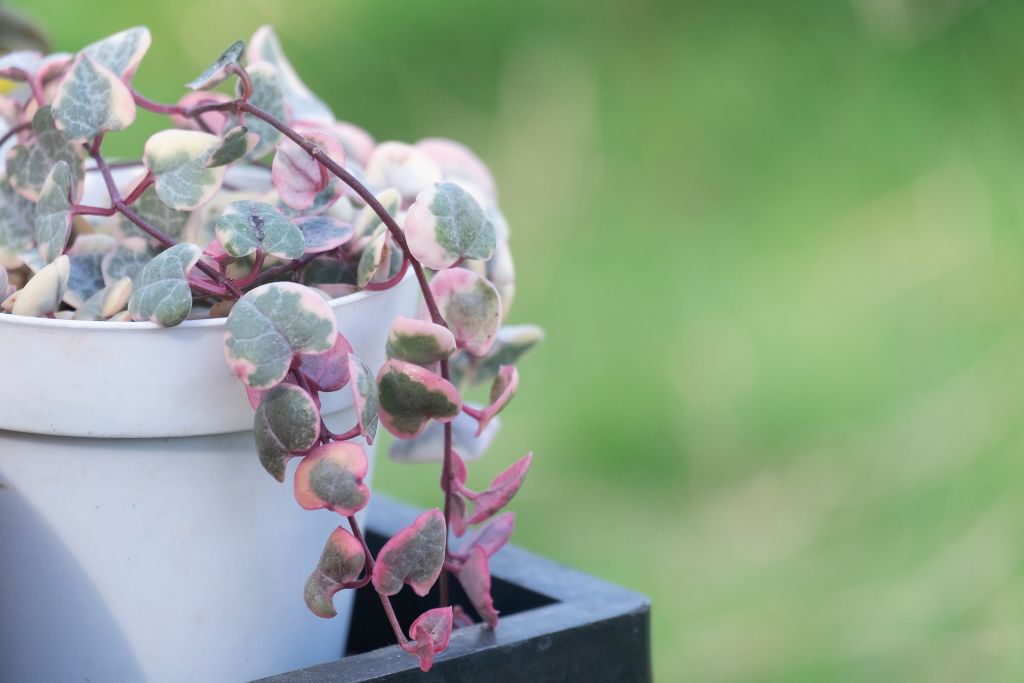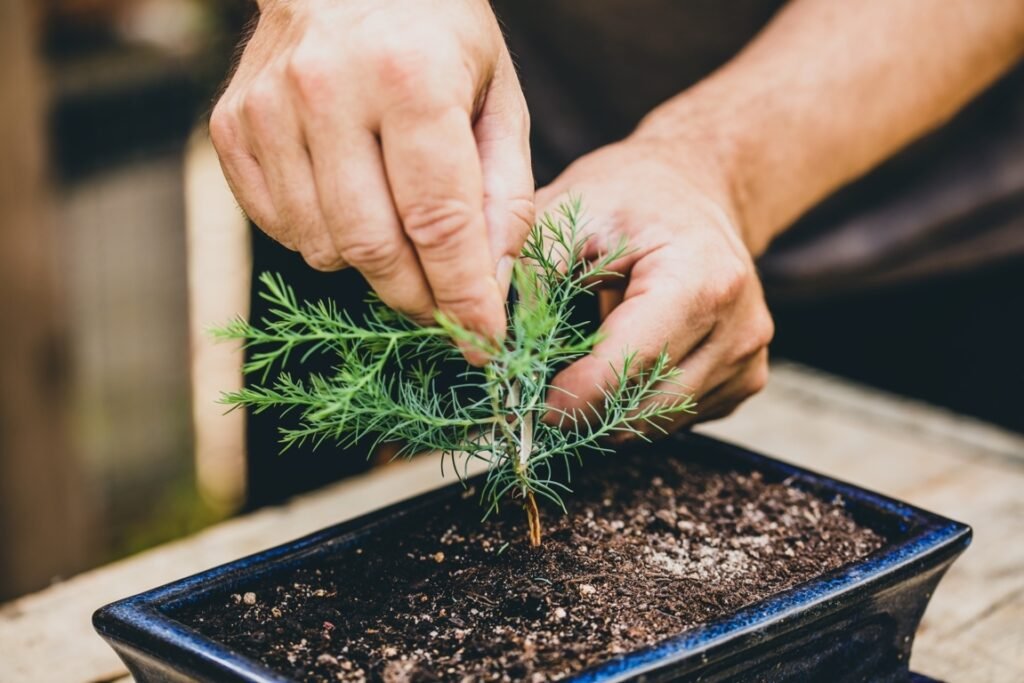
Pothos, also commonly referred to as hunter’s rove, money plant, golden pothos, or devil’s ivy, is a low-maintenance and decorative creeper enjoyed by both advanced horticulturalists and complete beginners. Even though it’s not troublesome to satisfy this plant’s needs, there are some typical traps you can fall for that may damage your leafy companion. I tend to come across one particular and frequently recurring question: “Why are my pothos’ leaves turning black?”
Your concern is totally understandable. It’s quite distressing indeed when you notice ugly black spots appearing on the foliage of your pot-dweller. Since the reason behind this phenomenon is not always self-evident, it might take some time until you successfully identify the root cause of the matter. Let me make this process quicker for you, so you can prevent your plant from developing more dark bruises. Below we’ll uncover the most common underlying issues and find an effective solution for each of them.
Reasons Why Your Pothos’ Leaves Are Turning Black
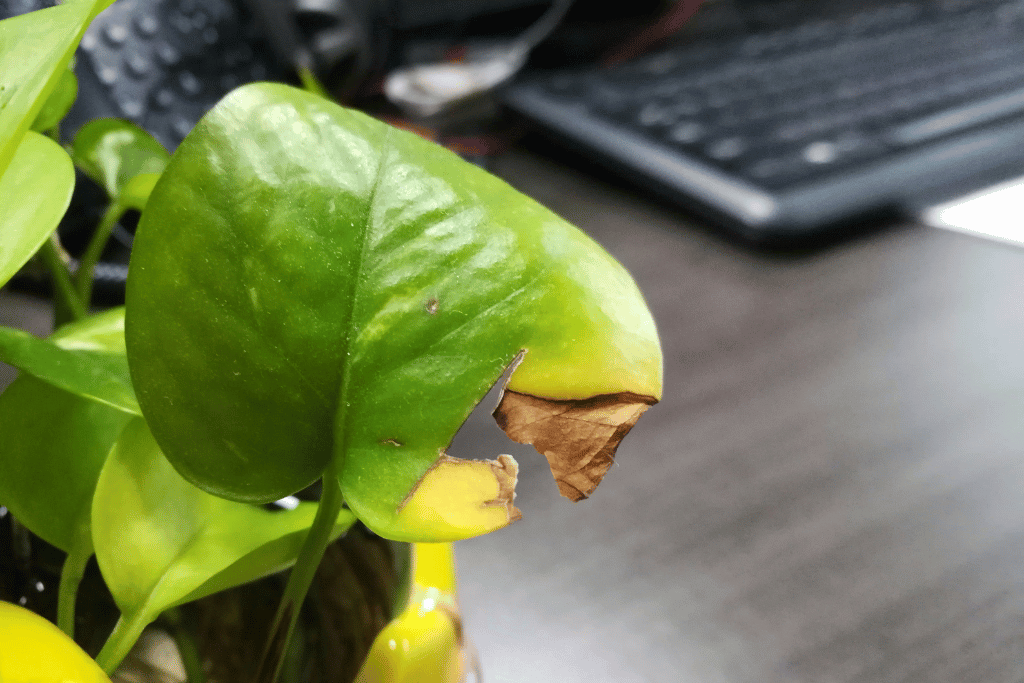
As you may have learned already from the Harlequin pothos care guide, maintaining a happy pothos isn’t that difficult. However, just like any other plant, these viny creatures are susceptible to health deterioration when not exposed to the appropriate conditions. Luckily, the source of the problem is usually overdone maintenance or a badly chosen location. So, no worries – you’ll be able to remedy discolored patches on your plant in no time!
1. Light
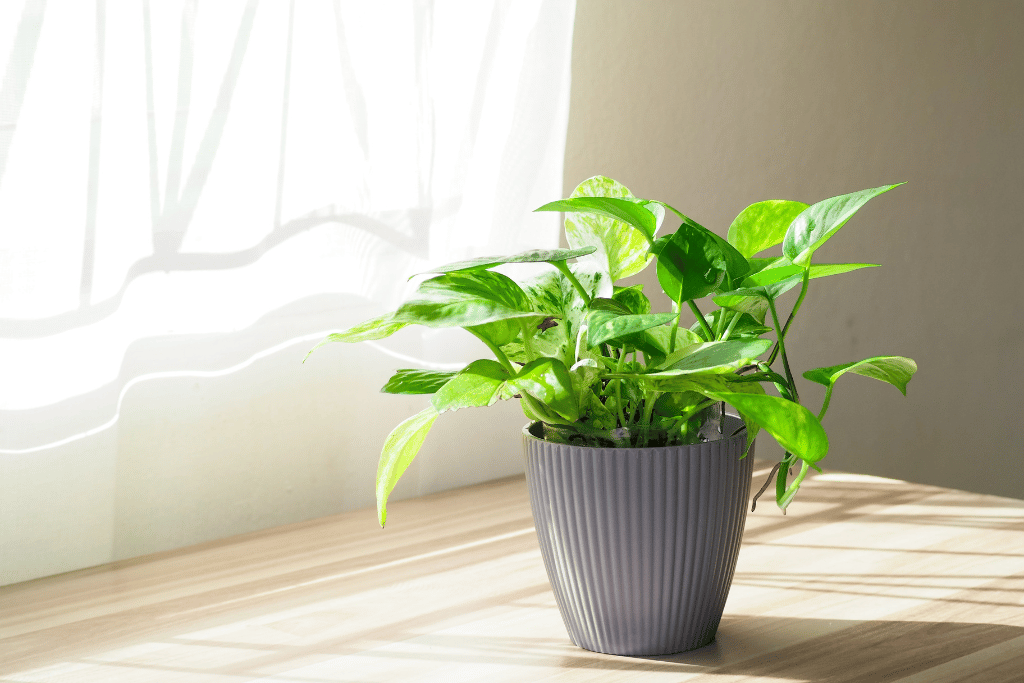
Even though this attractive green enjoys bright locations, it’s best to keep it away from plenty of direct sunlight. In tropical rainforests, pothos plants grow under the protective crowns of trees. Therefore, they only receive filtered sunlight. Placing the pots or hanging baskets near a window with sheer curtains provides it with adequate protection against scorching.
This resilient houseplant also tolerates moderate lighting conditions. So, putting it further away from the window in an otherwise bright room will also work. The only thing you’ll notice is that the foliage isn’t as vibrant and full-colored as it would be if exposed to more sunlight.
Be careful, not to reach the other extreme end – complete shade. Scarce light can be just as damaging as too much sunshine, resulting in brown, black, or yellow leaves.
It’s best to find that perfect middle ground for your vine. Most often, morning daylight is enough for the plant to thrive, so, avoid keeping it out in long afternoon hours, as this increases the risk of sunburn. If your leafy friend is in an excessively bright window that attracts heat, definitely consider moving it to reduced light conditions.
2. Water

When you ask yourself “Why are my pothos’ leaves turning black?”, flooding the plant with water maybe won’t even pop into your head. However, giving plants too much to drink is a frequent mistake even seasoned gardeners make when caring for their green collection. In a pothos, this practice generally results in symptoms like wilting, droopy leaves, or discolored spots on the foliage.
The general rule of thumb is to water your pothos every week or every other week and let the potting mix dry out between two sessions. The simplest way to determine whether it’s time to grab the watering can is the finger test. Dip your finger into the soil once the surface is dry to identify if it’s still moist in the deeper layers. If you feel that the dirt is dehydrated and find almost no soil stuck to your finger when you pull it out, then it’s time for a drink!
3. Temperature
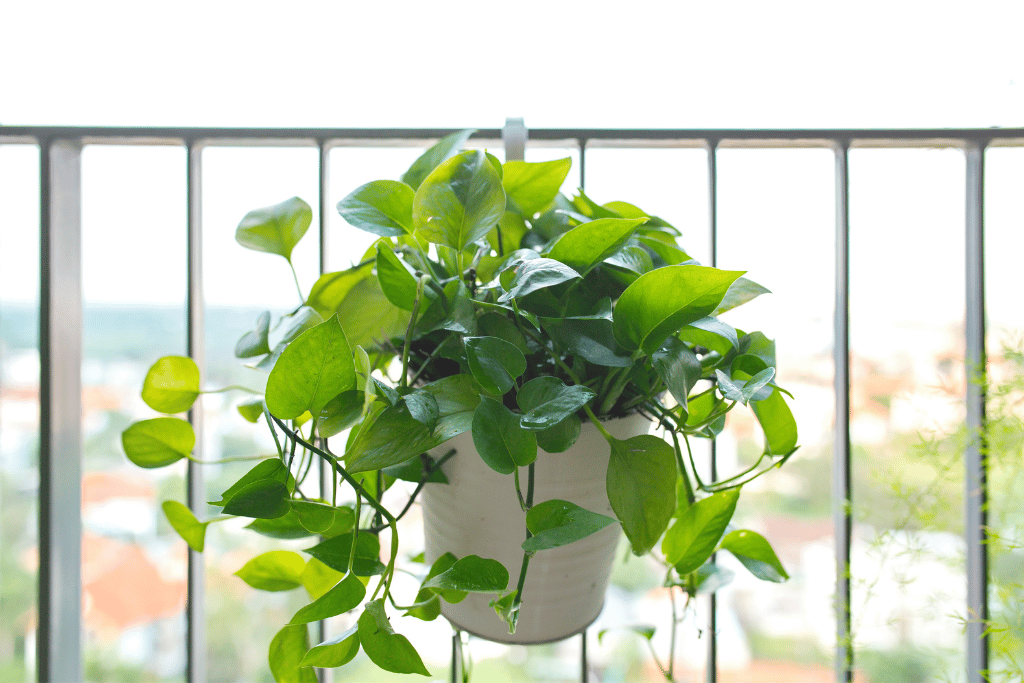
As a tropical native, this persistent climber feels its element in warmer temperatures and high humidity. For a thriving vine, 70-90 degrees Fahrenheit is the most ideal. Temperatures that drop below the lower limit can cause stunted growth and make the pothos’ leaves turn yellow with black spots.
Especially in winter months, when the air is naturally drier, consider misting your plant or placing a humidifier in its room. Alternatively, grouping more plants together might also work in increasing humidity levels around the greens.
4. Drainage
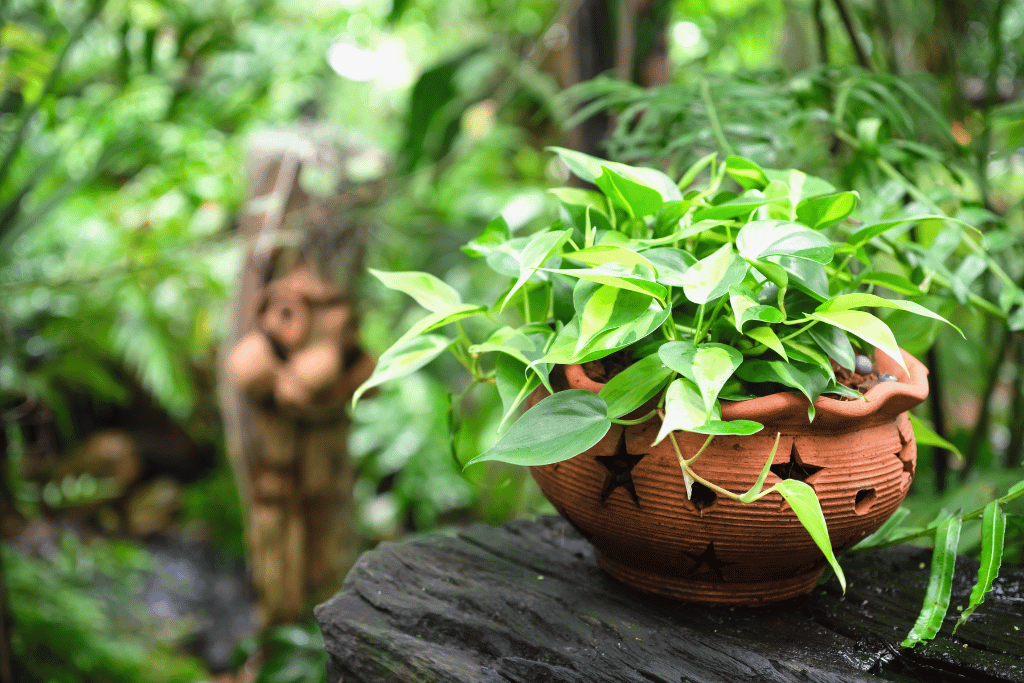
Sometimes, choosing the wrong potting mix or container signs the death sentence of a pothos. It’s actually not that surprising: picking a pot or basket that’s too small and doesn’t even have holes on the bottom results in the slow and painful suffocation of the plant. To avoid this, make sure you surround your tropical treasure with nutrient-abundant, well-draining soil that can perform proper air exchange. All this is highly recommended to be paired with a spacious container equipped with air holes for appropriate air exchange.
5. Fertilization
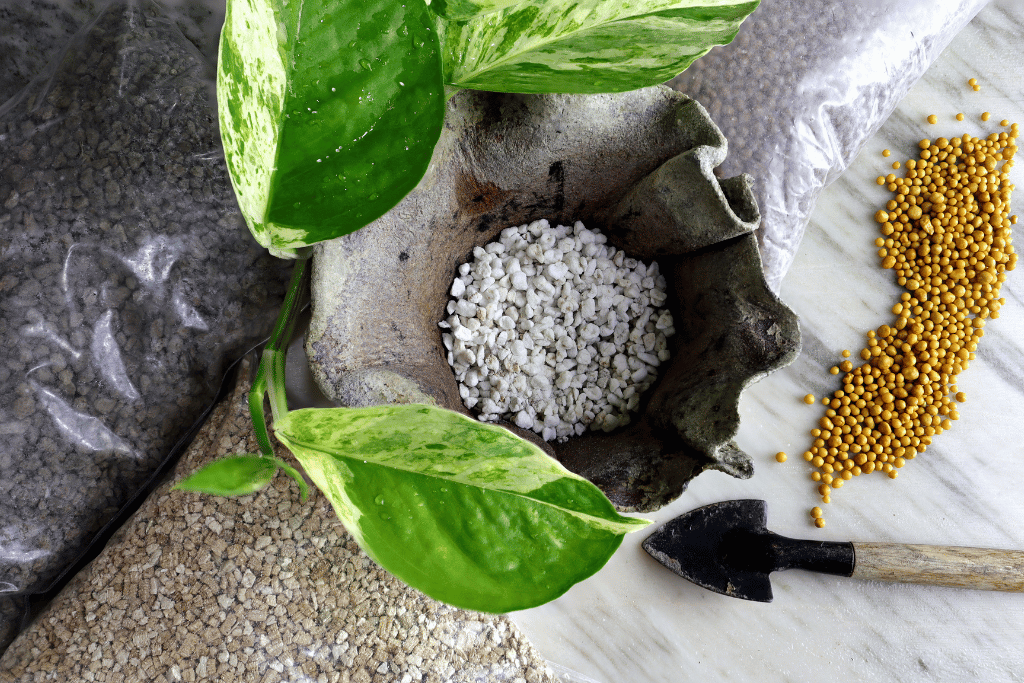
You may be under the impression that you provide the right amount of supplements for your creeper, when, in fact, you overfeed it. Keeping fertilization within bounds is key for continuous development. If your pothos leaves are turning black, it’s a warning sign that perhaps it receives way too many nutrients. Applying a balanced fertilizer (10-10-10 or 20-20-20) once a month during the growing season is perfectly enough for the vine to keep on growing.
However, before adjusting your fertilization schedule, modify the lighting and watering conditions of the plant first, as these factors are more likely to cause black, brown, or yellow patches on the foliage.
6. Pests
Once you tried all the above tips and the issue persists, it’s safe to suspect an insect infestation. This problem doesn’t only rear its head if your pothos is planted outside. There are several parasites in potted plants to reckon with indoors too, however, regarding this sturdy creeper, this usually comes down to three options.
Read more about the growing pothos outdoor.
Mealybugs
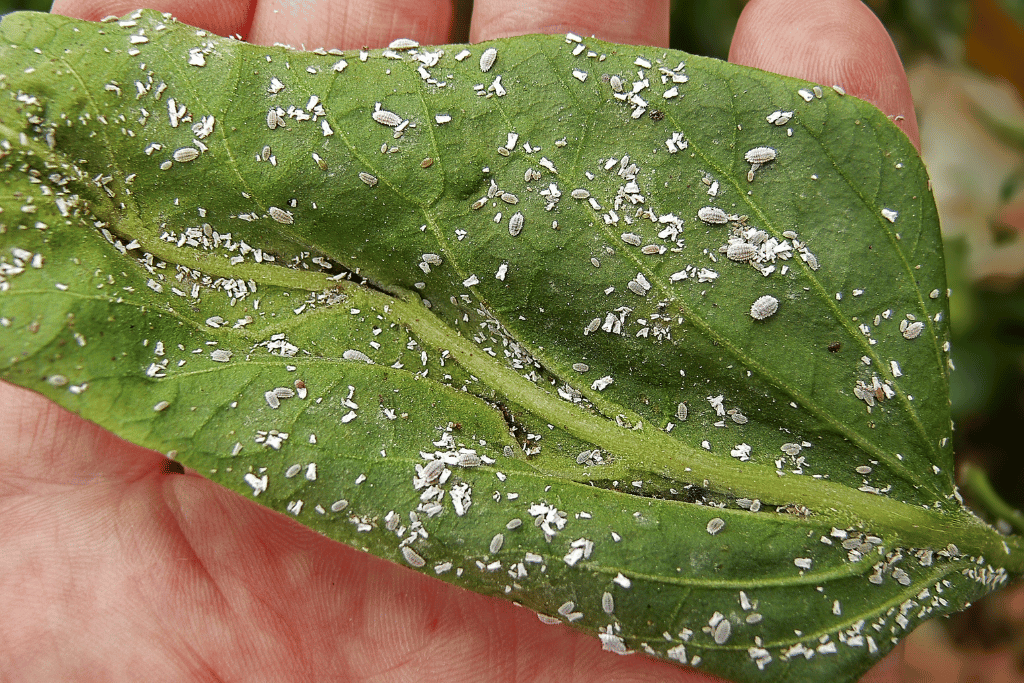
Mealybugs are tiny, elliptical, white creatures that have cotton-like outer skin. These troublesome, slow insects appear in colonies and are not picky when it comes to greenery: they attack and feast on the sap of indoor and landscape plants alike. Although mealybugs tend to feed on the foliage, chances are they appear on the roots as well if left unnoticed.
Scales
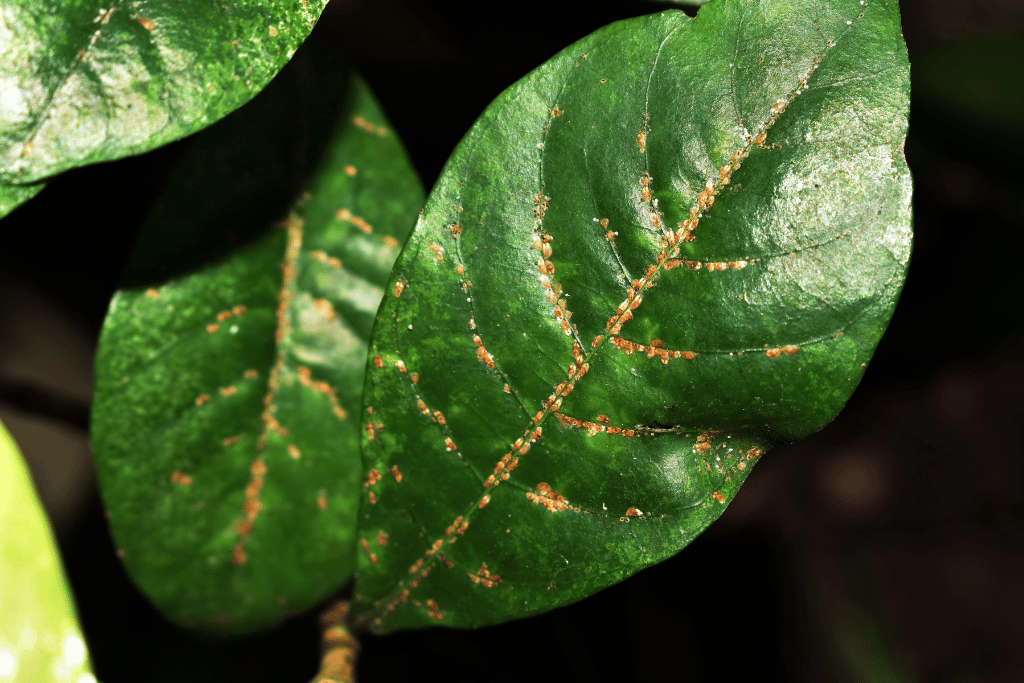
Scales are a bit more difficult to identify, as they are tiny brown insects that fool gardeners into believing they are plant material. But the truth is, that’s exactly what they feed on. These miniature culprits that stand behind the pothos plant’s leaves turning black deprive greenery of valuable nutrients, causing significant health reduction. Mostly found grouping up on stems and the underside of foliage, scale infestation may easily slip your notice.
If neglected, the affected pothos is going to slowly die. So, as a countermeasure, it’s suggested to obtain a targeted insecticide or apply rubbing alcohol on a soft cotton pad or swab and brush over the infested areas to kill the insects. However, make sure to test the latter method on a small spot first, since varieties might differ in sensitivity.
Spider mites
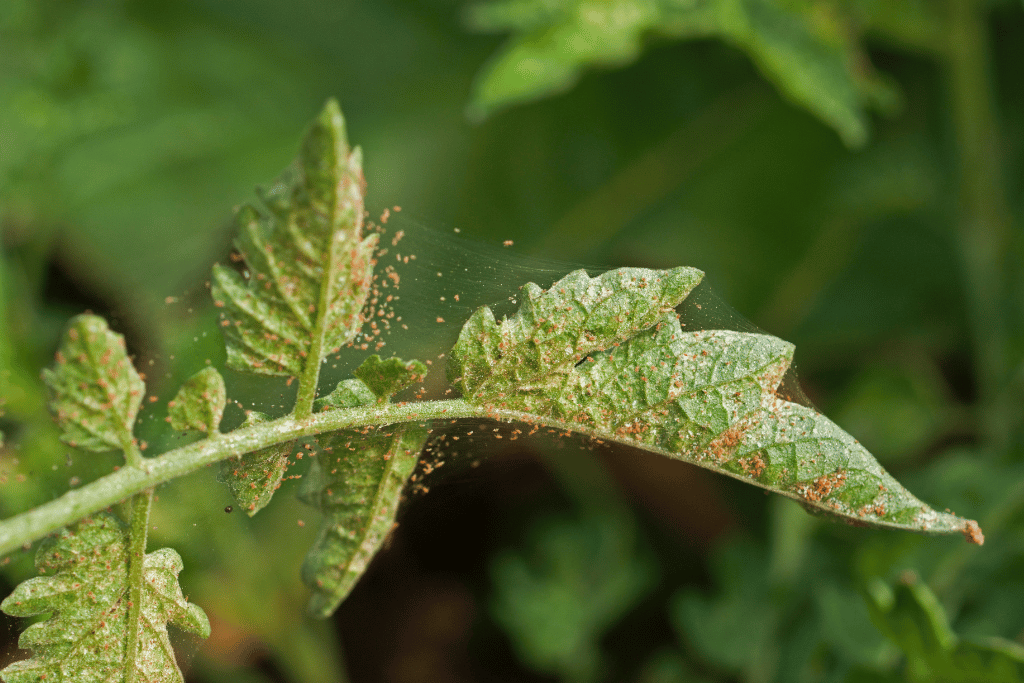
If your pothos’ leaves are turning yellow with black spots, you detect drooping foliage or any other sign of deterioration in health, there’s a slim chance that it has been attacked by spider mites. These tiny arachnoids produce webbing on the plant and feed on living tissue, leaving damaged parts behind.
Deploying your time-tested pesticide won’t work wonders this time, as spider mites are immune to the solution. Instead, spray the pothos with a water hose from a distance to remove the parasites. Alternatively, gently wipe the leaves of your green friend over with a cloth dipped in lukewarm water. As these tiny spiders prefer a dry and dusty environment, keeping the surface of the foliage moist will effectively discourage population growth.
Note one thing: In order to get rid of them, you must be tolerant and persistent. Treating the plant once won’t eradicate the insects, so keep on repeating the best practices until your pot-dweller is finally clear of free-riders.
What To Do If Black Leaves on Pothos Are Beyond Recovery
Severe damage or infestation may result in irreparable consequences. If your plant’s conditions don’t seem to improve after changing caring habits or eradicating pests, the only solution left is to rid the vine of dead parts. Use sharp scissors or secateurs to prune the dead areas to encourage the reallocation of energy to produce new growth. In case your greenery is utterly past help, there’s nothing else left but to dispose of it.
Wrapping Up
Pothos plant leaves turning black may be the consequence of numerous factors. Luckily, most of these issues can be quickly resolved by altering the way you maintain your precious green. Don’t be afraid to face more stubborn challenges too, as there’s nothing the right pesticide or DIY technique can’t solve if the problem is discovered in time. Experiment with your green indoor inhabitants and watch them thrive!
Frequently Asked Questions (FAQ)
Are recommended solutions the same if satin pothos leaves are turning black?
Yes. Since we’re talking about vines from the same family, treatment suggestions are the same regardless of the variety. Keep an eye out for environmental factors and exposure to pests to catch the decline of your plant as early as possible.
What should I do if my golden pothos’ leaves are turning black and droopy?
Adjusting the watering schedule of the green, placing it in a spot with indirect sunlight, cutting back on fertilizers, ruling out temperature stress, providing appropriate drainage, and looking out for pests contribute to maintaining a long-lasting and happy plant.


